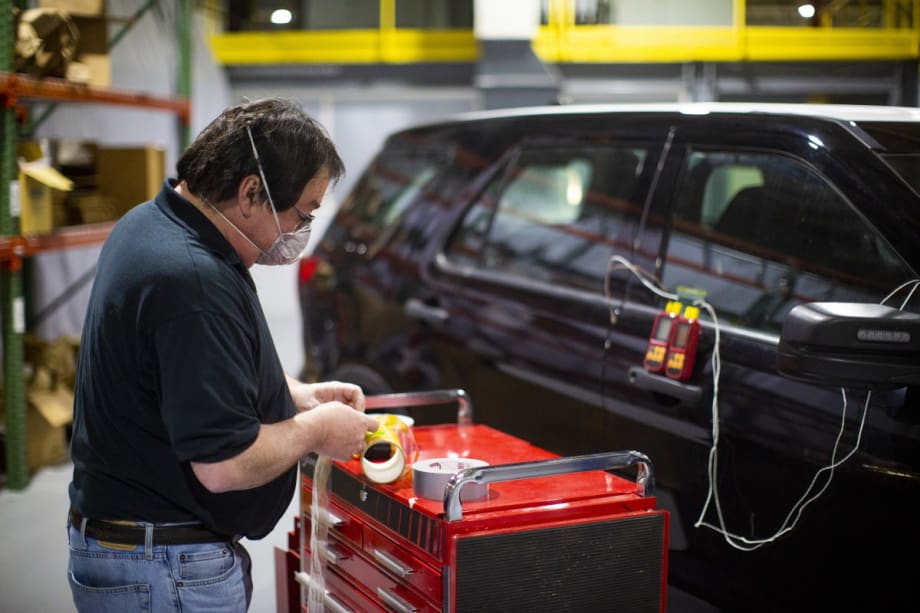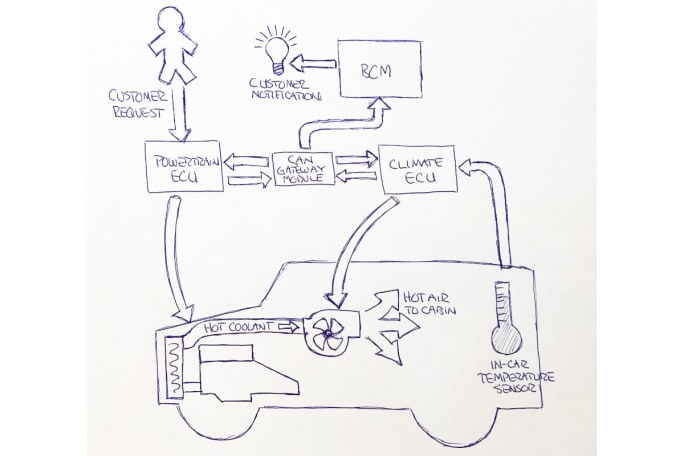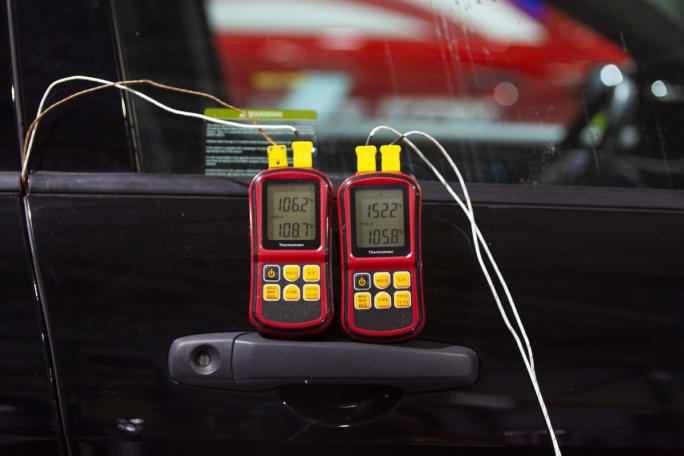“Our studies with Ford Motor Company indicate that exposing coronaviruses to temperatures of 56 degrees Celsius, or 132.8 degrees Fahrenheit, for 15 minutes reduces the viral concentration by greater than 99% on interior surfaces and materials used inside Police Interceptor Utility vehicles,” said Jeff Jahnes and Jesse Kwiek, laboratory supervisors at the Ohio State University Department of Microbiology.
Because of the temperatures involved, no one should be in the vehicle during the process. And Ford does advise customers "to remove all equipment that should not be exposed to excessive heat. These may include but are not limited to: personal items, laptops, battery operated equipment, personal protective equipment and/or potentially flammable material." The interior parts of the vehicle should not be harmed by the process, according to Ford.
Law enforcement will have multiple ways to monitor progress. Hazard lights and taillights will flash in a pre-set pattern to notify when the process has begun, then will change at the end to signal completion. The vehicle’s instrument cluster will also indicate progress. A cool-down process brings the temperature down from its highest points.
This heated process can be used by law enforcement regularly to help sanitize vehicles when officers are not inside. When used in conjunction with sanitization guidelines approved by Centers for Disease Control and Prevention, flooding the passenger compartment with elevated air temperature can help reach areas that may be missed by manual disinfecting procedures. Heat has the ability to seep into crevices and hard-to-reach areas, helping reduce the impact of human error in applying chemical disinfectants.
Ford conducted software operational trials in vehicles owned by the New York City Police Department, Los Angeles Police Department, Michigan State Police, Massachusetts State Police, Boardman Township Police Department in Ohio, and Seminole County Sheriff’s Office in Florida.














